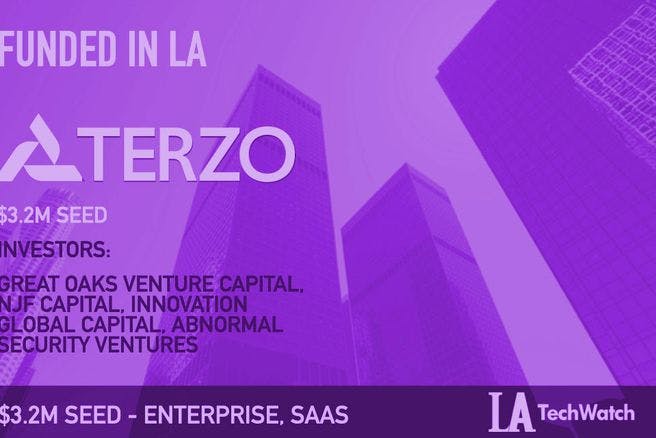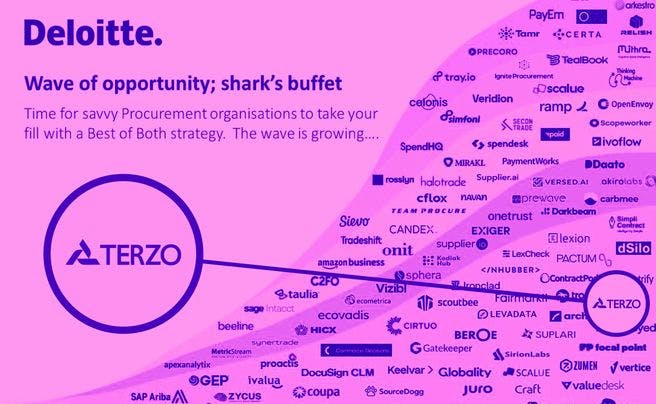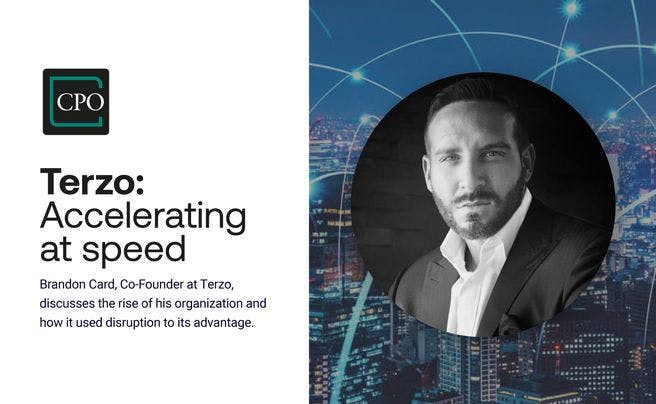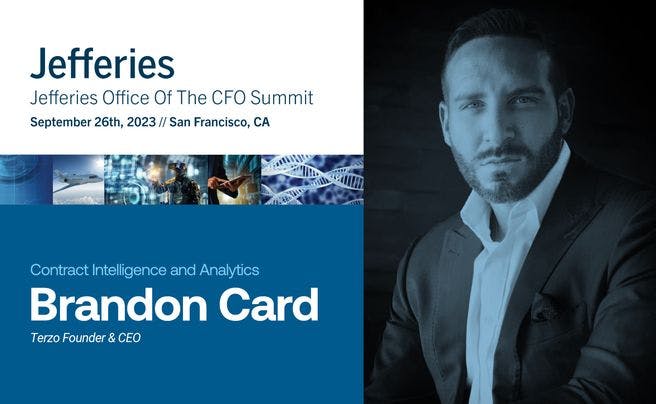The average company uses 137 unique SaaS applications on average. When adding in offline vendors, management of these vendor relationships can become a daunting task. Terzo is an enterprise vendor relationship management that enables organizations to take control of their vendor relationships and optimize them for the long and short term. By understanding spend and utilization data, users of the platform can drive cost-savings and enhanced performance by renegotiating contacts, changing plans, canceling unused services, removing excess licenses, and switching to different providers.
LA TechWatch caught up with CEO and Cofounder Brandon Card to learn more about the inspiration for the business, the company’s strategic plans, recent round of funding, and much, much more.
Who were your investors and how much did you raise?
We raised a $3.2M Seed. The round was led by four strong venture capital firms and we also attracted a great group of angel investors.
The round comes from Great Oaks Venture Capital (Lead), NJF Capital Ventures, Innovation Global Capital, Abnormal Security Ventures, and a number of angel investors that are primarily Silicon Valley founders or former CEOs.
Tell us about your product or service.
Terzo is enterprise Software-as-a-Service (SaaS) for Vendor Relationship Management (VRM). Terzo is to buyers what Salesforce is to sellers.
What inspired the start of Terzo?
Al Giocondi (cofounder) and I, worked at top enterprise software companies (Microsoft and IBM, respectively). Both constantly encountered complaints from their customers about Vendor Relationship Management. Brandon and Al leveraged top CRM tools to manage their customers, but it was apparent that the customers didn’t have the right tools to manage the vendors.
Our third founder, Pradeep Thangavel, experienced the difficulties of Vendor Relationship Management while managing strategic relationships like AWS and Splunk, as a leader at Freshworks.
How is it different?
We’re the only Vendor Management Platform that is designed for the enterprise buyer. We’re like a CRM platform, but with every detail tailored to the buyer. This enables a new level of collaboration and accountability with internal and external stakeholders, which dramatically improves speed-to-value and innovation at large enterprises. Vendor Management products today are basically point solutions with very narrow use cases, whereas Terzo is built to connect and contextualize data and people holistically.
 What market are you targeting and how big is it?
What market are you targeting and how big is it?
We are targeting large enterprises (Fortune 1000), best-of-breed startups, like pre-IPO companies, and organizations who rely heavily on third-party suppliers, like large university systems, municipalities, and large nonprofits. We estimate the TAM to be about $30B.
What’s your business model?
Standard SaaS business model; native cloud.
How has COVID-19 impacted the business??
COVID-19 has impacted the business both negatively and positively. On the negative side, 2020 budgets for new projects were cut or even frozen for many organizations in our target market. The positive is that now companies are working remotely or in hybrid settings, making them more reliant on digital transformation, workflow, collaboration, and data centralization products. All of these themes are very positive for Terzo.
What was the funding process like?
We bootstrapped until we started attracting angel investors, which set us up to attract the VCs into our seed round. The angel investors were key, both for funding and advice in how to approach the top Seed VCs. The funding process was quite difficult during the middle of 2020 due to the pandemic. We could see investors grappling with uncertainty across the macro-economic environment. The process took longer than we anticipated, but we learned to connect and build trust with the investor community without face-to-face meetings and ended up very happy with our investor group and the round.
What are the biggest challenges that you faced while raising capital?
The biggest challenge was connecting with investors and building trust without any face-to-face meetings. This was a two-way street, as both entrepreneurs and investors were all trying to navigate the ‘new world’ at the same time. Now, I think everyone has gotten used to the new realities and plenty of deals are happening across the market in early and later stages of investment.
What factors about your business led your investors to write the check?
Investment – especially at the seed stage – is still about betting on people. I think we have a very strong founding group and we were fortunate to also recruit some very high caliber people to our vision even during a pandemic. If you can’t get a pass on talent and vision, little else matters amongst angels and very early-stage institutional investors.
Once investors believed in our people, they turned their attention to our business model – Enterprise B2B SaaS. Our category has been a very solid investment theme for a decade now, so the business model wasn’t a blocker.
With people and business models in the clear, attention turns to the product, the pain points we are solving, the TAM, and the go-to-market strategy. Investors understand our pain points and they see a new category here in Vendor Relationship Management, which could be a very big category in the Enterprise IT stack of the future – perhaps similar to CRM, ERP and P2P categories. Investors were attracted to the uniqueness of our vision to be a true hub of Vendor Relationship Management, as opposed to a point solution. Obviously, some of our core themes – collaboration, data centralization, workflows, automation – these all have positive tailwinds from the pandemic and remote, distributed, and hybrid work.
With people and business models in the clear, attention turns to the product, the pain points we are solving, the TAM, and the go-to-market strategy. Investors understand our pain points and they see a new category here in Vendor Relationship Management, which could be a very big category in the Enterprise IT stack of the future – perhaps similar to CRM, ERP and P2P categories. Investors were attracted to the uniqueness of our vision to be a true hub of Vendor Relationship Management, as opposed to a point solution. Obviously, some of our core themes – collaboration, data centralization, workflows, automation – these all have positive tailwinds from the pandemic and remote, distributed, and hybrid work.
What are the milestones you plan to achieve in the next six months?
We plan to have ten enterprise customers and $1M in Annual Recurring Revenue (“ARR”). We also plan to raise our Series A. At the moment we’re focused on closing customers and we’ll begin making select contact with Series A investors in the fall. If things progress as we expect, we’ll close an A Round in the first half of 2022.
What advice can you offer companies in Los Angeles that do not have a fresh injection of capital in the bank?
Be smart with the capital you have. That sounds obvious, but too many entrepreneurs look at the media and see a lot of deals happening and assume there is money that will always be there. Managing burn against accomplishments and being able to explain your business and be honest about KPI attainment is important.
Above all, meet with more investors before you need more capital! Investors often don’t understand the core business problems you are attacking because they are investors, not business operators. Meet with more people and you’ll find someone who understands the problem well enough to invest.
Where do you see the company going now over the near term?
We see the company really establishing and taking ownership over the VRM category. We’re not an incumbent trying to rig our platform to new use cases on top of tons of expensive licenses in place. We’re a fresh idea built from the ground up to help enterprises optimize their vendor ecosystems through relationship management. Terzo represents a new way to drive innovation and business results through groups like procurement, which have traditionally been viewed as less strategic cost centers.
What’s your favorite outdoor activity in LA?
Pickleball.




